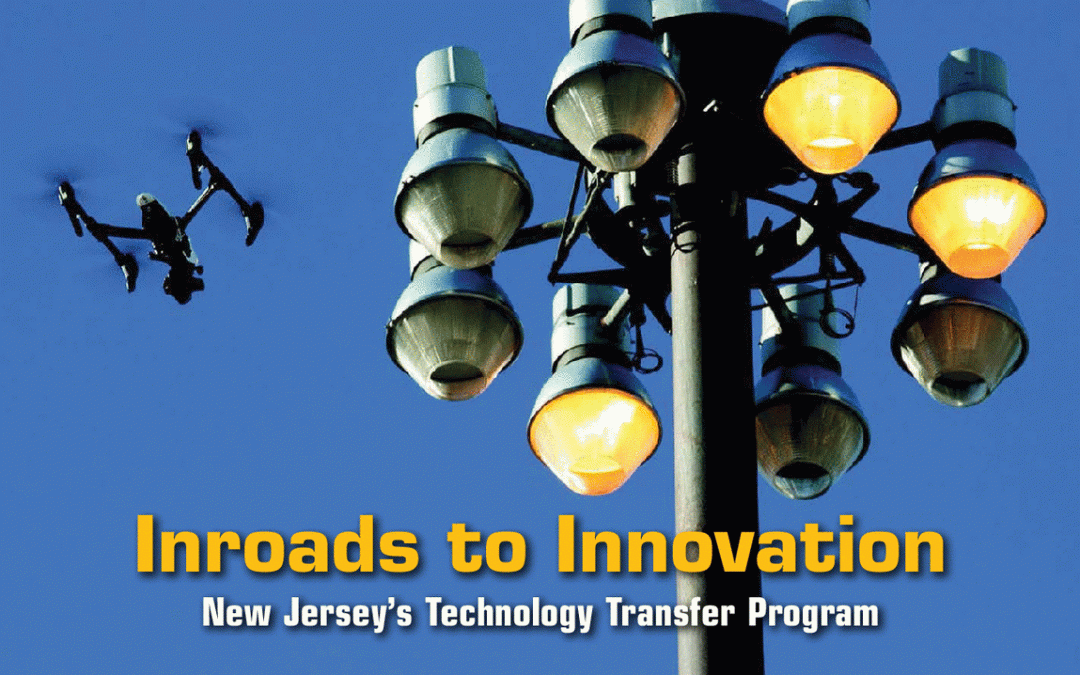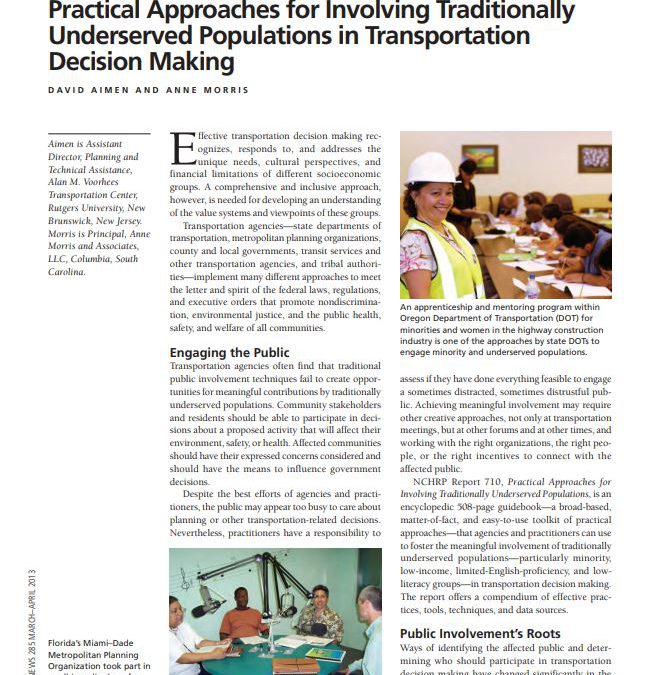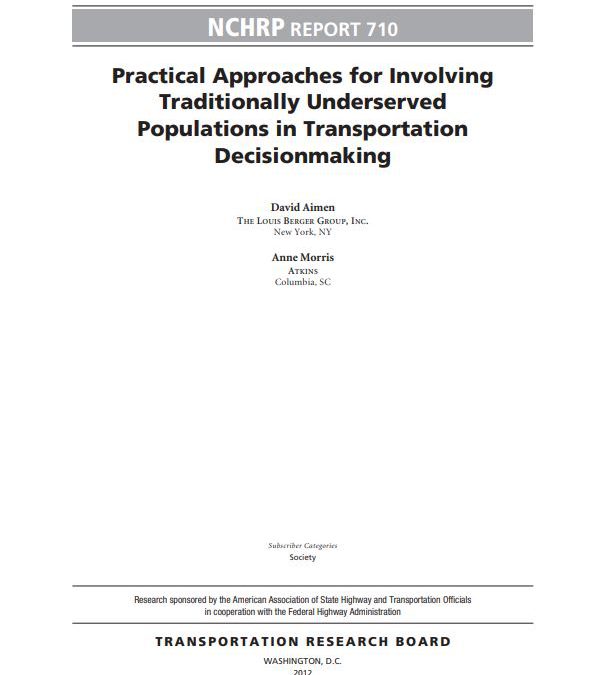A look at the work of New Jersey’s Technology Transfer Program.


A look at the work of New Jersey’s Technology Transfer Program.

A toolkit of practical approaches for agencies and practitioners of effective practices, tools, techniques, and data sources are presented. to foster the meaningful involvement of traditionally underserved populations in transportation decision making.

This report provides state DOTs, MPOs, and other transportation agencies with a rich source of practical and effective tools, techniques, and approaches for identifying and connecting with underserved and underrepresented populations in transportation decisionmaking.
Induced travel elasticities associated with new road capacity are typically estimated for roads of higher functional classifications, such as interstate freeways and principal arterials. These are estimated as “own” elasticities, that is an increase in lane kilometers...
There is a growing perception that e-scooters are more dangerous than bicycles and e-bikes, with towns implementing measures to ban their usage. Yet, there is not much evidence from large scale surveys to substantiate this claim. Nearly 14,000 micromobility injuries...
We compare charging station accessibility for different income groups in the San Francisco Bay Area. Using a microsimulation model, we estimate charging station accessibility under varying battery range scenarios, assuming different income groups have vehicles with...
The New Jersey Micromobility Guide serves as a resource for micromobility users across the state, collecting and summarizing the laws and safety best practices that can make riders safer. Micromobility, which includes e-bikes, e-scooters, and other low-speed devices,...